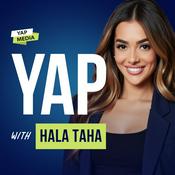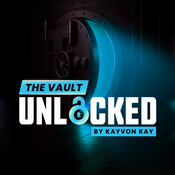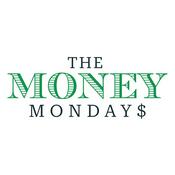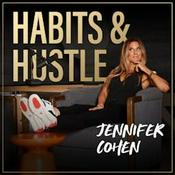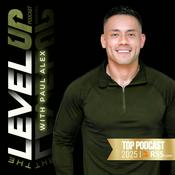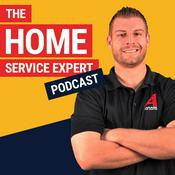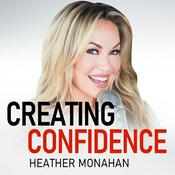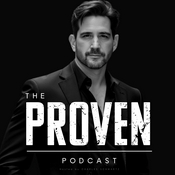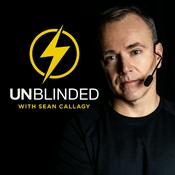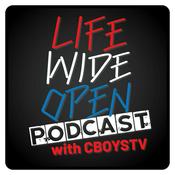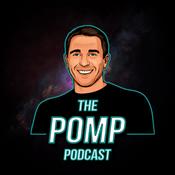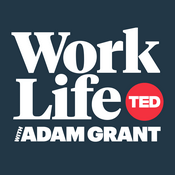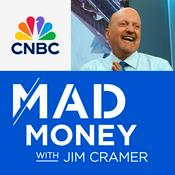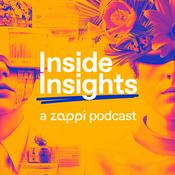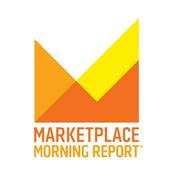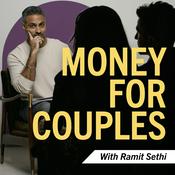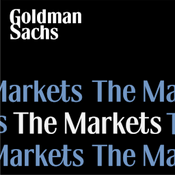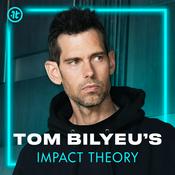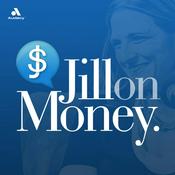Available Episodes
5 of 221
- The CFO Reality Check Every Entrepreneur Needs: Leading Through the NumbersIn This Episode of Business Lunch, join Ryan Deiss and I in this enlightening episode of Business Lunch, where they delve into the often overlooked yet crucial topic of accounting and finance. We discuss how entrepreneurial optimism can clash with the harsh realities of financial reporting. Learn how to navigate these challenges and foster a productive relationship with your CFO to ensure your company's financial health.Timestamps:00:00 – Entrepreneurial Optimism vs. Financial Realism01:36 – Why Accounting Reporting Shapes Company Culture02:37 – Switching from Cash to Accrual Accounting03:17 – When Financial Reports Become Depressing05:41 – Fixing the Reporting Process08:29 – Avoiding Obstacles: A Common Entrepreneurial Pitfall09:54 – Support Your Team… or Change It12:19 – Leadership’s Role in Financial Clarity17:34 – Preparing for Exit & Upgrading the Finance Team20:17 – Why Accounting Method Changes Can Distort Profit27:03 – Restructuring Contracts to Fix Revenue Recognition31:54 – Challenging Accounting Assumptions37:15 – The Importance of Cash Flow Over Profit40:54 – Don’t Let Accounting Wag the Dog43:10 – Final Thoughts & OutroConnect with me on social:TikTok: Check out my TikTok HereInstagram: Check out my Instagram HereFacebook: Check out my Facebook HereLinkedIn: Check out my LinkedIn HereSubscribe to my YouTube 👉 HereResources:• 7 Steps to Scalable workbook• Get my book, Zero Down, FREEMentioned in this episode:Build Your CEO DashboardGet one report every week of the key metrics you need to know with the CEO Dashboard!CEO Dashboard--------43:58
- The Cash Flow Reality Check Every Business Owner NeedsIn this episode of Business Lunch, we walk you through the ins and outs of managing business finances. We explain the potential pitfalls of keeping more than a month's worth of operating expenses in the account. We explain how that can lead to complacency and unnecessary spending. We also explain how business can cover unexpected events and tricky payroll situations, like those pesky months with three payroll cycles or prepaying for holidays. We go beyond the glamor of being an entrepreneur to the real details behind the scenes.Highlights:"We're very big on lifestyle and freedom and all those kinds of things. But it's also important to acknowledge that it's not a perfect situation very often.""There are times when things are absolutely amazing. And there's times when things could frankly be a hell of a lot better. And I think that's called life. I think that's called entrepreneurship""If we're buying a business, I hate the agreement part. I love negotiation and strategy. But when it comes to reading a 75-page document, I just absolutely can't stand it."Timestamps:00:00 - Operating Account Insight01:15 - Personal Calendar Reflection02:15 - Acknowledging Imperfections03:15 - Loving Strategy but Hating Legal Work06:52 - The Reality of Entrepreneurship07:39 - Cyclicality in Business08:54 - Handling Excess Profit10:20 - Minimum Operating Reserve10:37 - Importance of Operational Cash10:44 - Prepaying Payroll ChallengesConnect with me on social:TikTok: Check out my TikTok HereInstagram: Check out my Instagram HereFacebook: Check out my Facebook HereLinkedIn: Check out my LinkedIn HereSubscribe to my YouTube 👉 HereResources:• 7 Steps to Scalable workbook• Get my book, Zero Down, FREEMentioned in this episode:Build Your CEO DashboardGet one report every week of the key metrics you need to know with the CEO Dashboard!CEO Dashboard--------59:19
- Why the First One-Person Billion-Dollar Company Is Closer Than You ThinkIn this episode of Business Lunch, we dive into extreme leverage—how solo founders are building multi-million dollar businesses with basically zero headcount. We break down the playbook: finding expensive problems, validating demand before writing code, and letting AI handle the execution. We also cover the risks, the new KPIs that matter, and the vision of one founder running a portfolio of micro businesses on a single AI-driven back office.Chapters00:00 Building a Billion Dollar AI Company Alone13:18 Leveraging AI for Business Solutions13:45 Redefining Roles in the Age of AISpecial AnnouncementAfter 5 years of teaching entrepreneurs how to build, buy, and sell companies, I'm retiring all Epic courses and educational content permanently. This isn't because they didn't work, thousands have built real wealth with these frameworks, but because AI, capital markets, and collaboration have changed the game. I'm shifting from teaching deals to doing deals. Want access to everything before it disappears forever? This is your last chance to grab 5 years of proven frameworks, strategies, and training materials before they're gone for good. See the full story and whats going into the vault here: Go to the vaultConnect with me on social:TikTok: Check out my TikTok HereInstagram: Check out my Instagram HereFacebook: Check out my Facebook HereLinkedIn: Check out my LinkedIn HereSubscribe to my YouTube 👉 HereRESOURCES:• 7 Steps to Scalable workbook• Get my book, Zero Down, FREEMentioned in this episode:The VaultSpecial Announcement After 5 years of teaching entrepreneurs how to build, buy, and sell companies, I'm retiring all Epic courses and educational content permanently. This isn't because they didn't work, thousands have built real wealth with these frameworks, but because AI, capital markets, and collaboration have changed the game. I'm shifting from teaching deals to doing deals. Want access to everything before it disappears forever? This is your last chance to grab 5 years of proven frameworks, strategies, and training materials before they're gone for good. See the full story and whats going into the vault here: Go to the vaultRetirement Vault--------15:50
- The 90-Day Proof Pack: How PE Firms Engineer Instant ValueIn this episode of Business Lunch, we dive into the critical 90 to 100-day period following a private equity acquisition, emphasizing the need for rapid, auditable value creation. It outlines a strategic framework for CFOs, detailing tactical moves to achieve immediate financial impact while integrating lean thinking principles to eliminate waste and enhance operational efficiency. The discussion also highlights the importance of human behavior in executing these strategies effectively.Chapters00:00 The Critical 90-Day Sprint10:05 Strategic Framework for CFOs18:37 Tactical Moves for Immediate ImpactSpecial AnnouncementAfter 5 years of teaching entrepreneurs how to build, buy, and sell companies, I'm retiring all Epic courses and educational content permanently. This isn't because they didn't work, thousands have built real wealth with these frameworks, but because AI, capital markets, and collaboration have changed the game. I'm shifting from teaching deals to doing deals. Want access to everything before it disappears forever? This is your last chance to grab 5 years of proven frameworks, strategies, and training materials before they're gone for good. See the full story and whats going into the vault here: Go to the vaultConnect with me on social:TikTok: Check out my TikTok HereInstagram: Check out my Instagram HereFacebook: Check out my Facebook HereLinkedIn: Check out my LinkedIn HereSubscribe to my YouTube 👉 HereRESOURCES:• 7 Steps to Scalable workbook• Get my book, Zero Down, FREEMentioned in this episode:The VaultSpecial Announcement After 5 years of teaching entrepreneurs how to build, buy, and sell companies, I'm retiring all Epic courses and educational content permanently. This isn't because they didn't work, thousands have built real wealth with these frameworks, but because AI, capital markets, and collaboration have changed the game. I'm shifting from teaching deals to doing deals. Want access to everything before it disappears forever? This is your last chance to grab 5 years of proven frameworks, strategies, and training materials before they're gone for good. See the full story and whats going into the vault.Retirement Vault--------21:56
- Identity Trust: Why 125 Years of Marketing Just DiedIn this episode of Business Lunch, Roland Frasier and Ryan Deiss discuss the evolving landscape of the customer journey, emphasizing the importance of trust in modern marketing. They explore how traditional stages of the buying process are being replaced by a more fluid approach, where trust becomes the key driver of transactions. Through case studies and examples, they highlight the significance of identity trust, authenticity, and the role of founders as trust agents in building strong connections with consumers. The conversation also touches on the challenges and strategies for effectively engaging audiences in both B2B and B2C contexts.Chapters00:00 The Death of the Traditional Customer Journey02:51 The Role of Trust in Modern Marketing06:09 Case Studies: Successful and Controversial Campaigns09:05 Identity Trust: Connecting with Consumers11:57 The Power of Authenticity in Advertising14:56 Building Trust in B2B vs B2C17:59 Actionable Strategies for Trust Building20:47 The Importance of Founders as Trust AgentsSpecial AnnouncementAfter 5 years of teaching entrepreneurs how to build, buy, and sell companies, I'm retiring all Epic courses and educational content permanently. This isn't because they didn't work, thousands have built real wealth with these frameworks, but because AI, capital markets, and collaboration have changed the game. I'm shifting from teaching deals to doing deals. Want access to everything before it disappears forever? This is your last chance to grab 5 years of proven frameworks, strategies, and training materials before they're gone for good. See the full story and whats going into the vault here: Go to the vaultConnect with me on social:TikTok: Check out my TikTok HereInstagram: Check out my Instagram HereFacebook: Check out my Facebook HereLinkedIn: Check out my LinkedIn HereSubscribe to my YouTube 👉 HereRESOURCES:• 7 Steps to Scalable workbook• Get my book, Zero Down, FREE--------36:51
More Business podcasts
Trending Business podcasts
About Business Lunch
How much more successful would you be if you had lunch once a week with an insanely successful entrepreneur who shared their biggest secrets on how they think and achieve success? Well, now you can! Grab your seat at the table as successful entrepreneurs reveal their step-by-step strategies, fascinating stories, travel hacks and other delicious tidbits each week with serial entrepreneur/business strategist, Roland Frasier.
Podcast websiteListen to Business Lunch, Young and Profiting with Hala Taha (Entrepreneurship, Sales, Marketing) and many other podcasts from around the world with the radio.net app
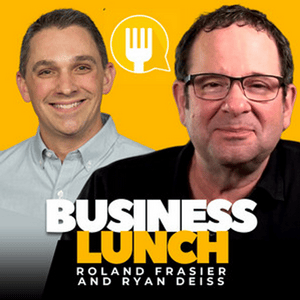
Get the free radio.net app
- Stations and podcasts to bookmark
- Stream via Wi-Fi or Bluetooth
- Supports Carplay & Android Auto
- Many other app features
Get the free radio.net app
- Stations and podcasts to bookmark
- Stream via Wi-Fi or Bluetooth
- Supports Carplay & Android Auto
- Many other app features


Business Lunch
Scan code,
download the app,
start listening.
download the app,
start listening.
